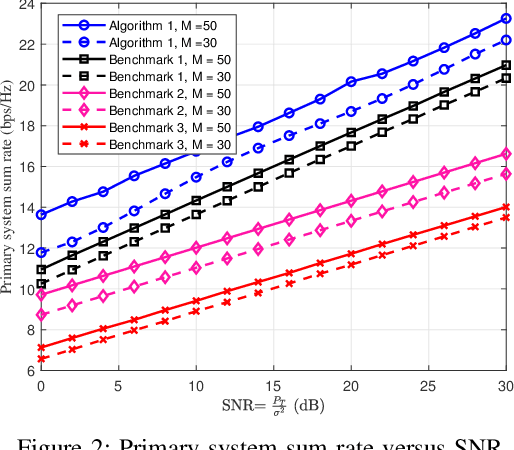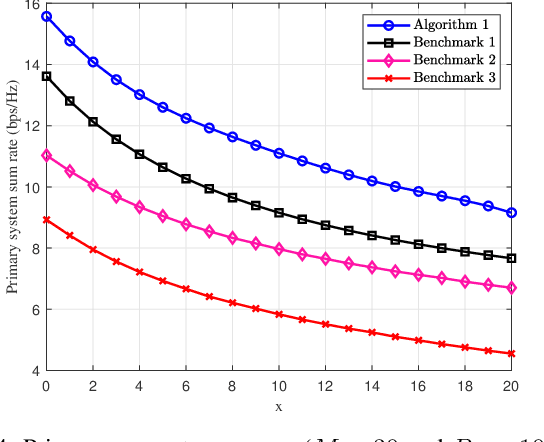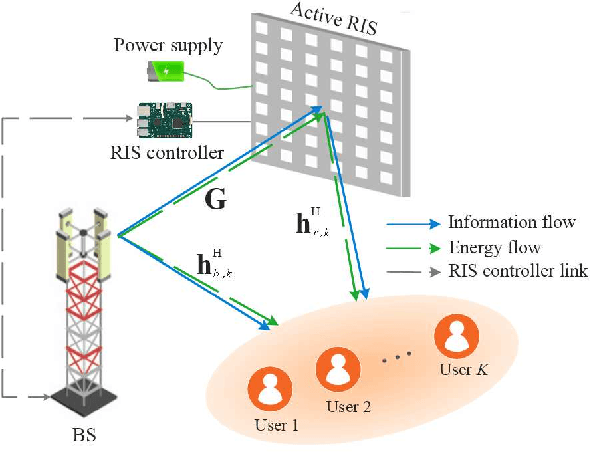Azar Hakimi
Signal Detection in Ambient Backscatter Systems: Fundamentals, Methods, and Trends
Dec 06, 2023Abstract:Internet-of-Things (IoT) is rapidly growing in wireless technology, aiming to connect vast numbers of devices to gather and distribute vital information. Despite individual devices having low energy consumption, the cumulative demand results in significant energy usage. Consequently, the concept of ultra-low-power tags gains appeal. Such tags communicate by reflecting rather than generating the radio frequency (RF) signals by themselves. Thus, these backscatter tags can be low-cost and battery-free. The RF signals can be ambient sources such as wireless-fidelity (Wi-Fi), cellular, or television (TV) signals, or the system can generate them externally. Backscatter channel characteristics are different from conventional point-to-point or cooperative relay channels. These systems are also affected by a strong interference link between the RF source and the tag besides the direct and backscattering links, making signal detection challenging. This paper provides an overview of the fundamentals, challenges, and ongoing research in signal detection for AmBC networks. It delves into various detection methods, discussing their advantages and drawbacks. The paper's emphasis on signal detection sets it apart and positions it as a valuable resource for IoT and wireless communication professionals and researchers.
IRS-Enabled Backscattering in a Downlink Non-Orthogonal Multiple Access System
Sep 02, 2022



Abstract:Intelligent reflecting surface (IRS)-enabled backscatter communications can be enabled by an access point (AP) that splits its transmit signal into modulated and unmodulated parts. This letter integrates non-orthogonal multiple access (NOMA) with this method to create a two-user primary system and a secondary system of IRS data. Considering the decoding order, we maximize the rate of the strongest primary user by jointly optimizing the IRS phase shifts, power splitting (PS) factor at the AP, and NOMA power coefficients while guaranteeing the quality of service (QoS) for both weak user and IRS data in the primary and secondary systems, respectively. The resulting optimization problem is non-convex. Thus, we split it into three parts and develop an alternating optimization (AO) algorithm. The advantage is that we derive closed-form solutions for the PS factor and NOMA power coefficients in the first two parts. In the third part, we optimize the phase shifts by exploiting semi-definite relaxation (SDR) and penalty techniques to handle the unit-modulus constraints. This algorithm achieves substantial gains (e.g., 40--68%) compared to relevant baseline schemes.
Multiuser MISO PS-SWIPT Systems: Active or Passive RIS?
Jun 28, 2022


Abstract:Reconfigurable intelligent surface (RIS)-based communication networks promise to improve channel capacity and energy efficiency. However, the promised capacity gains could be negligible for passive RISs because of the double pathloss effect. Active RISs can overcome this issue because they have reflector elements with a low-cost amplifier. This letter studies the active RIS-aided simultaneous wireless information and power transfer (SWIPT) in a multiuser system. The users exploit power splitting (PS) to decode information and harvest energy simultaneously based on a realistic piecewise nonlinear energy harvesting model. The goal is to minimize the base station (BS) transmit power by optimizing its beamformers, PS ratios, and RIS phase shifts/amplification factors. The simulation results show significant improvements (e.g., 19% and 28%) with the maximum reflect power of 10 mW and 15 mW, respectively, compared to the passive RIS without higher computational complexity cost. We also show the robustness of the proposed algorithm against imperfect channel state information.
 Add to Chrome
Add to Chrome Add to Firefox
Add to Firefox Add to Edge
Add to Edge